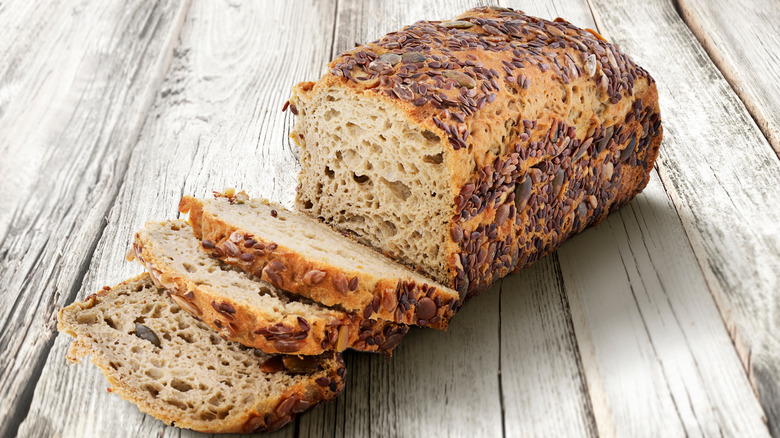Is Multigrain Bread Actually Good For You?
Nothing beats great-tasting bread, but from a health standpoint, some types are better off left on the shelf. For example, white bread might be the most unhealthy variety you can eat. Just about every nutrient and mineral has been stripped from the flour used to make it, according to Everyday Health. In addition, because white bread has little fiber and protein, it reaches your blood system quickly, which can lead to irregular blood sugar levels.
Wheat bread, or any other type of whole-grain bread, is a better option. However, it's still important to read the label to ensure you are getting the full benefits of whole grains. The Harvard T.H. Chan School of Public Health notes that whole grains offer a "complete package" because they contain the germ, endosperm, and bran of the grain. If a label does not specifically say the bread is 100% whole grain, then you are likely getting a flour combination that includes white flour (via the Cleveland Clinic). Furthermore, any types of bread that are "enriched" should be avoided. So, if whole grains are good, does that mean multigrain bread is healthier?
Certain varieties of multigrain bread are healthy
If you are looking for a healthy bread option, multigrain bread is a good place to start. However, it is still important to read the label. The term "multigrain" means that more than one type of grain was used to make the bread, according to the HuffPost. Multigrain does not automatically mean whole grain, but whole-grain bread can use multiple grains. For the healthiest choice, Livestrong suggests looking for a multigrain bread that uses 100% whole grains because they include minerals, some B vitamins, and protein your body can use. In addition, multigrain bread also includes fiber.
The average American diet does not provide enough fiber, so choosing bread with high amounts could help lower your cholesterol, blood pressure, and inflammation (via American Society for Nutrition). You should also avoid any bread that has high amounts of sodium and sugars. One slice of bread should not have more than 3 grams of sugar per serving (per HuffPost). Michigan State University suggests staying under 230 milligrams of sodium per slice.


